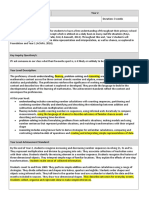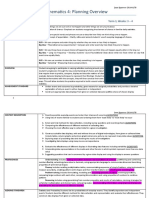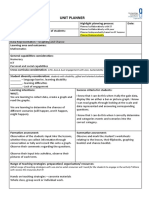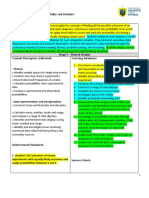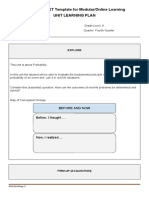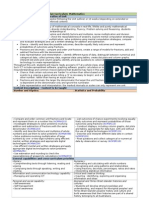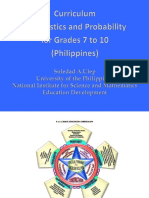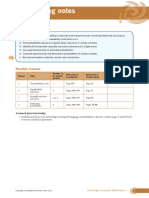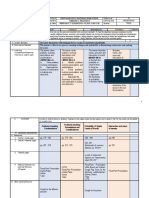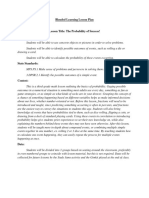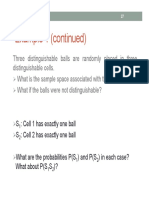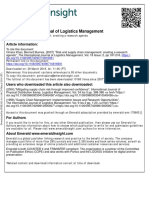0% found this document useful (0 votes)
148 views6 pagesLesson Sequence
This unit focuses on probability and data representation for Year 5 students. Students will investigate probability through chance experiments and various data displays. They will develop an understanding that probability is measured from 0 to 1 using fractions. Students will pose survey questions, collect categorical and numerical data, and represent this data in different formats to calculate probabilities and make judgments about chance outcomes. The lessons aim to build students' comprehension and application of probability concepts through hands-on activities and assessments.
Uploaded by
api-460373794Copyright
© © All Rights Reserved
We take content rights seriously. If you suspect this is your content, claim it here.
Available Formats
Download as DOCX, PDF, TXT or read online on Scribd
0% found this document useful (0 votes)
148 views6 pagesLesson Sequence
This unit focuses on probability and data representation for Year 5 students. Students will investigate probability through chance experiments and various data displays. They will develop an understanding that probability is measured from 0 to 1 using fractions. Students will pose survey questions, collect categorical and numerical data, and represent this data in different formats to calculate probabilities and make judgments about chance outcomes. The lessons aim to build students' comprehension and application of probability concepts through hands-on activities and assessments.
Uploaded by
api-460373794Copyright
© © All Rights Reserved
We take content rights seriously. If you suspect this is your content, claim it here.
Available Formats
Download as DOCX, PDF, TXT or read online on Scribd
/ 6
